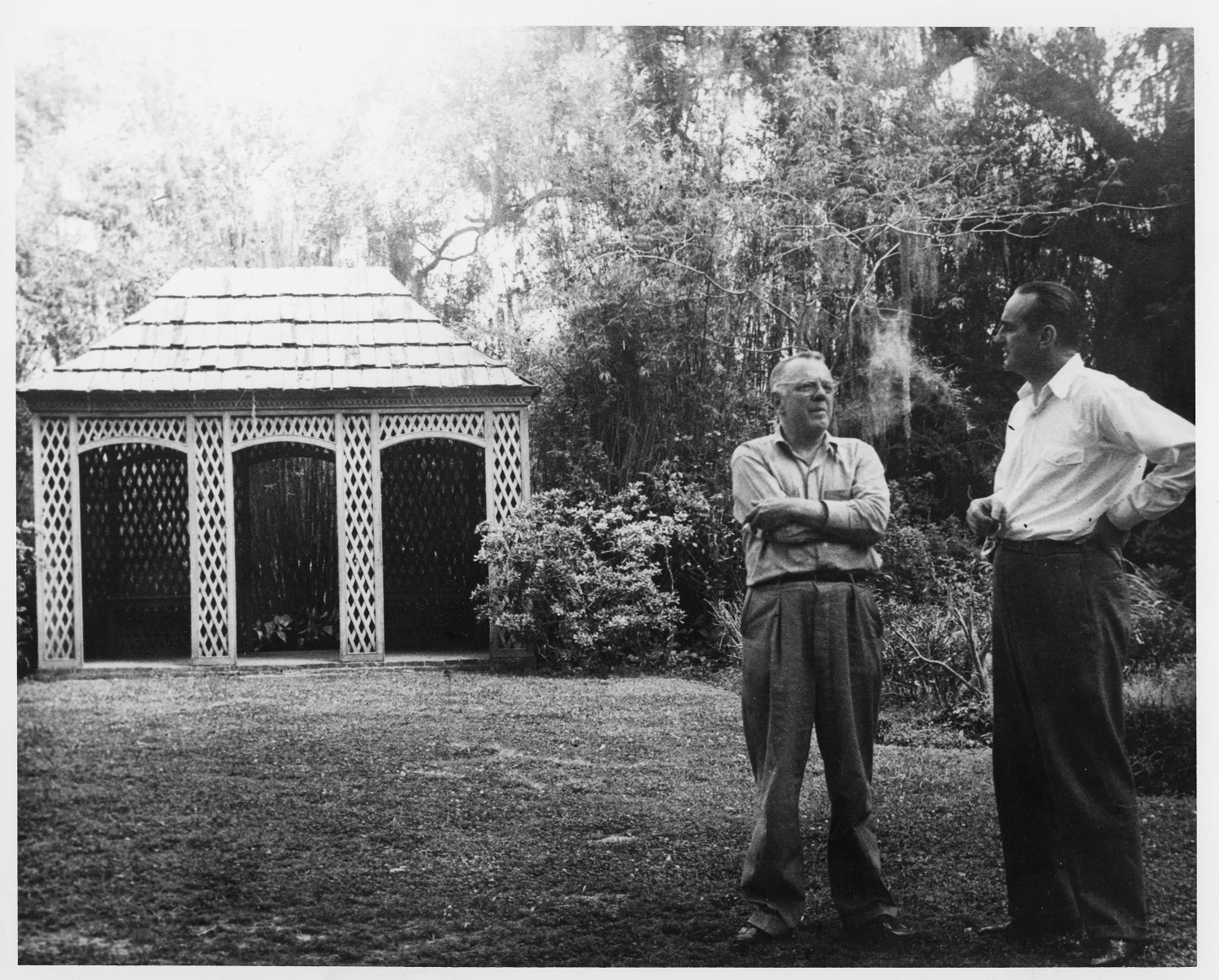National Trust Era
During his lifetime, William Weeks Hall was determined that the Shadows-on-the-Teche would become a museum and gardens open to the public.
William Weeks Hall (left) talking with preservation architect Richard Koch in front of the Koch-designed gazebo. Shadows-on-the-Teche Archive.
Shortly before his death, the National Trust for Historic Preservation accepted the property, its collections, and a small endowment to preserve the site and complete its transition from private residence to museum. The National Trust, chartered in 1949, had a mission “to receive donations of sites, buildings and objects significant in American history and culture and to preserve and administer them for public benefit,” and the Shadows became the 3rd property in its portfolio.
In its first decade as part of the National Trust, the organization interpreted the Shadows primarily through the lens of the Weeks family’s history. At the same time, it undertook a vast restoration project, undoing many of the changes made by Weeks Hall and Richard Koch in the 1920s, while also rebuilding, conserving, and adapting parts of the historic estate for contemporary use. Perhaps the most notable example of this restoration and adaptation was the construction of a ticketing office and public bathroom on the archeological site of the former brick slave quarters. Architect Richard Koch used Adrien Persac’s 1861 painting of the Shadows to build the new structure so that it looked like former 19th century slave quarters. A directive from the Louisiana Landmarks Society—who operated the Shadows in the 1960s—mandated that the new restrooms be segregated “in accordance with the customs of the day.” This process of racial segregation brings into stark relief the ways in which the Shadows’ interpretation marginalized the African American population that is so central to its story and the New Iberia community.
Since the 1990s, the Shadows and the National Trust have embarked on a renewed effort to reinterpret the historic site to better reflect the stories of the African American men and women who were enslaved there, built its wealth before the Civil War, and the many more who continued to operate the estate in the decades after. New interpretive initiatives are refocusing the mission of the Shadows to reflect a more equitable and diverse narrative, highlighting the history of the institution of slavery in Southern Louisiana, the shape of Jim Crow laws and their impact on the local New Iberia community, and the role of historic sites as memorials and educational spaces through which we can look to our history in order to create a more just society today.

